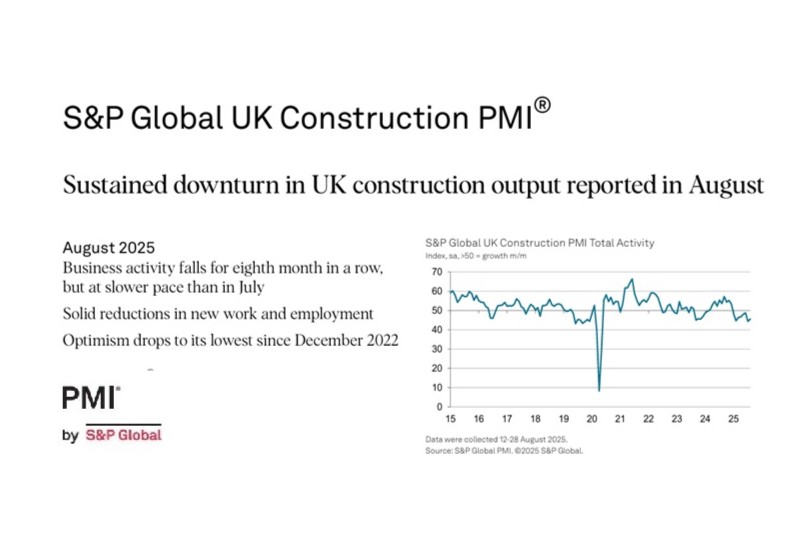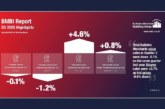
The latest S&P Global UK Construction PMI survey data pointed to a decline in total industry activity for the eighth successive month, led by marked reductions in the housing and civil engineering segments. At the same time, business activity projections for the year ahead were reportedly the “least upbeat since December 2022.”
The headline S&P Global UK Construction Purchasing Managers’ Index™ (PMI®) – a seasonally adjusted index tracking changes in total industry activity – registered 45.5 in August, up from 44.3 in July (which was the lowest reading for just over five years). However, the index was still well below the
neutral 50.0 value and indicative of another solid decline in overall construction output.
August data indicated that a slower reduction in commercial building (index at 47.8) helped to offset steeper declines in residential (44.2) and civil engineering activity (38.1). The latest reduction in output across the house building category was the sharpest since February.
Civil engineering was the weakest-performing segment in August, with business activity decreasing at the fastest pace since October 2020. Survey respondents again commented on a lack of new projects to replace completed work.
Total new orders across the construction sector decreased for the eighth month running in August, although the rate of decline eased to the least marked since January. Construction companies widely commented on challenging market conditions, intense price competition and headwinds from sluggish UK economic activity.
Lower volumes of output and incoming new work led to hiring freezes and the non-replacement of departing staff in August. Employment numbers have fallen throughout 2025 to date and the latest reduction was the fastest since May. A number of firms commented on efforts to mitigate rising payroll costs by cutting back on recruitment. Subcontractor usage also decreased markedly in August and at one of the fastest rates seen over the past five years.
A lack of forthcoming project starts led to a solid reduction in purchasing activity across the construction sector. The latest decline in input buying was the sharpest for three months.
Subdued demand for construction products and materials led to shorter wait times for supplier deliveries in August. Purchasing prices increased at the slowest pace since October 2024, despite ongoing reports of suppliers seeking to pass on higher wages and transportation costs. Adding to
signs of easing cost inflation, latest data indicated the slowest rise in subcontractor charges for six months.
Finally, the latest survey data highlighted a renewed weakening in business optimism across the construction sector. Around 34% of the survey panel predict a rise in output during the year ahead, while 22% forecast a reduction. This pointed to the lowest degree of confidence since December
2022. Construction companies reported subdued market conditions, elevated business uncertainty and risk aversion among clients. That said, lower borrowing costs and the prospect of rising infrastructure work were cited as positive factors.
Tim Moore, Economics Director at S&P Global Market Intelligence, commented:
“Construction activity has decreased throughout the year to-date, which is the longest continuous downturn since early-2020. August data signalled only a partial easing in the speed of decline after output fell at the fastest pace for over five years in July.
“Sharply reduced levels of housing and civil engineering activity were again the main reasons for a weak overall construction sector performance. Commercial work showed some resilience in August, with the downturn the least marked for three months.
“There were some positive signals on the supply side as vendors’ delivery times shortened, subcontractor availability improved and purchasing price inflation hit a ten-month low. However, easing supply conditions mostly reflected subdued demand and a lack of new projects.
“Elevated business uncertainty and worries about broader prospects for the UK economy meant that construction sector optimism weakened in August. The proportion of panel members expecting a rise in output over the year ahead was 34%, down from 37% in July and lower than at any time since December 2022.”










